#30s pulp
Text
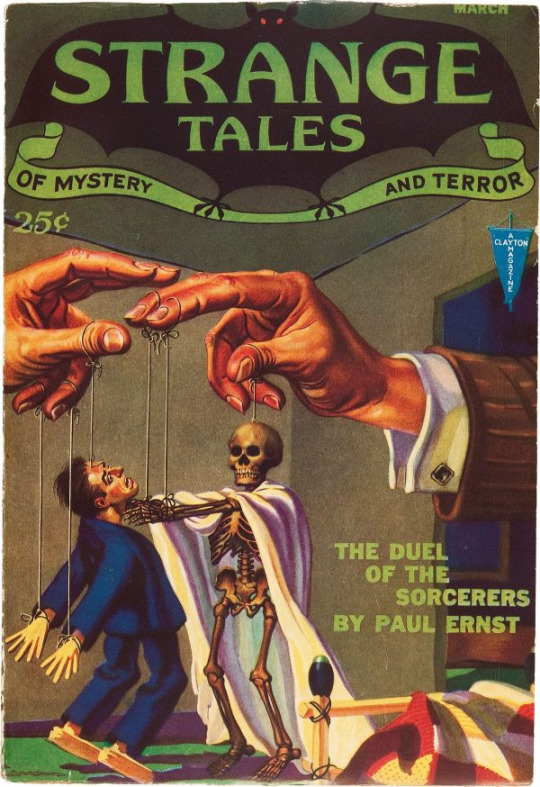
STRANGE TALES #4 (Clayton Publishing, 1932)
Art: H.W. Wesso
#pulp#pulps#pulp magazine#horror#horror pulp#pulp horror#pulp art#1930s pulp#30s pulp#pulp mag#pulp mags#sorcerers#magic#fantasy#strange tales#weird tale#weird literatire#wyrd
19 notes
·
View notes
Text
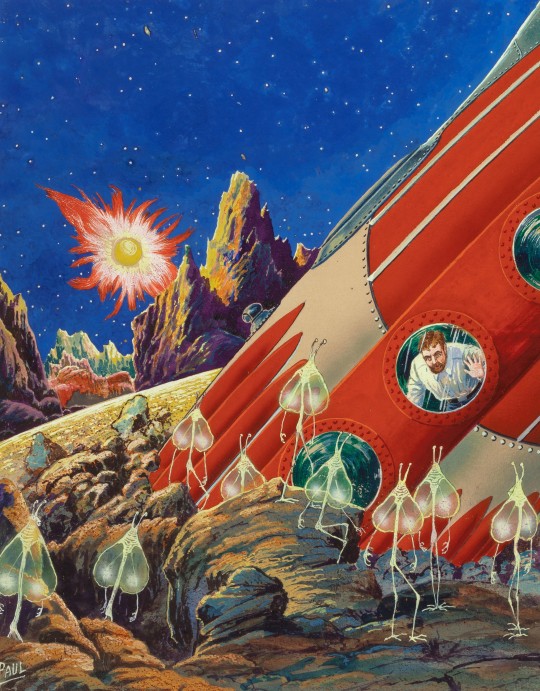
Master of the Asteroid - art by Frank R. Paul (1932)
#frank r. paul#master of the asteroid#wonder stories magazine#30s sci-fi art#pulp art#science-fiction#cover art#1930s#1932
175 notes
·
View notes
Text

Vintage Pulp - Saucy Movie Tales (Mar1936)
Art by Norman Saunders
Movie Digest
#Pulp#Saucy Movie Tales#Film#Norman Saunders#Women#GGA#Good Girl Art#Movie Digest#Vintage#Art#Magazines#South Seas#1936#1930s#30s#Pulp Art#Pulp Illustration
281 notes
·
View notes
Text
diversity loss! the only male witch we see in the entirety of hilda the series mysteriously vanished and was never seen again after a giant hand monster from the void snatched him.

#severin.txt#also this was all over a trashy pulp fiction romance novel tildy checked out at the library nearly 30 years prior#he died for your sins tildy.#still love her though xx#hilda the series
109 notes
·
View notes
Text
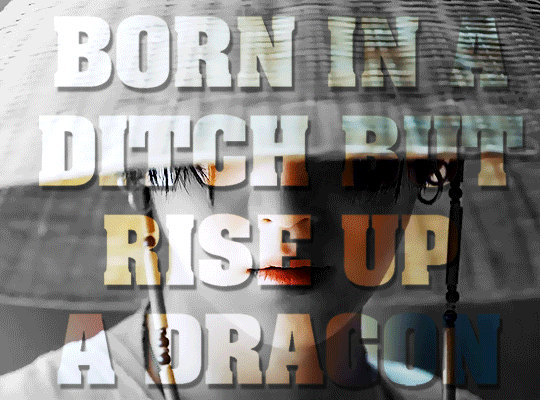
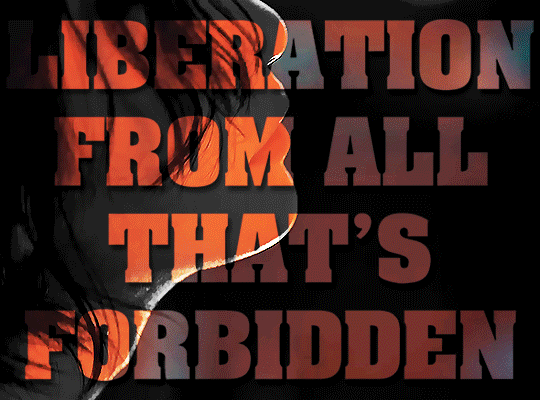

and I begin to bloom like a lotus flower once again
the Agust D trilogy
#agust d#min yoongi#bts#suga#bts suga#bangtan#bangtan sonyeondan#bts gifs#btsedit#my gifs#i've had this concept in my head for a while now#and i've been trying to figure out how i wanted to do it#and i finally figured it out#the font is the pulp fiction font lol#i wanted to use the scarface font but it's paid and all the free versions look weird#and like... i'm not paying $30 for a font i'll only use once#and anyway the color effect wouldn't really work with it#this set right here is the entire reason i decided to learn how to make gifs in photoshop#anyway his eyes man#he has the most beautiful intense eyes i have ever seen#amygdala is very very hard for me to watch actually#and that's part of why this took me so long also#had to keep in mind what he said in the shoot sketch lol#cuz like... y'know really amygdala is faaaaaar from my favorite agust d track#but the sheer emotion in both the song itself and the mv#it's almost suffocating#he's tremendously talented and yeah i'm a lil obsessed tbh lol
73 notes
·
View notes
Text
Reading pulp fantasy and understanding how it shaped the fantasy genre is extremely fascinating because its like "oh, that's why every Strong Female Character heroine of the 80s-90s fantasy boom was Like That, huh"
#like whoof the fantasy pulps of the 30s were a bad time for literally any female character at all#even when there was any bit of like narrative agency or protag focus given to a character its like WE MUST DESCRIBE HOW SEXY SHE IS! TITS!#like knowing pulps shaped the zeitgeist of ADnD is like#yknow what. i think its a fucking miracle we got any female characters at all out of that actually#like certainly it's uhhhh antiquated attempts sometimes but. holy god.
62 notes
·
View notes
Photo

𝔊𝔢𝔬𝔯𝔤𝔢 ℜ𝔬𝔷𝔢𝔫
#George Rozen#The Creeping Death#The Shadow#Magazine#pulp art#cover#1933#30's#30s#skeleton#memento mori#art#artwork#painting#cover art#Illustration#skull#dead#death
310 notes
·
View notes
Text

Vintage Pulp - Weird Tales (July1937)
Art by Virgil Finlay
#Magazines#Weird Tales#Pulp#Horror#Virgil Finlay#Fantasy#Art#Weird Menace#Robert Bloch#Paul Ernst#Henry Kuttner#Clifford Ball#Pulp Art#Pulp Illustration#Illustration#Swords And Sorcery#1937#1930s#30s
48 notes
·
View notes
Text




#I was so obsessed with him then#I’m so glad I’ve come back and still feel the same about him nearly 30 years later#jarvis cocker#common people#pulp band#I never realised he had such pretty eyes though#that’s the benefit of HD nowadays#we didn’t have that in the 90s lol
80 notes
·
View notes
Text
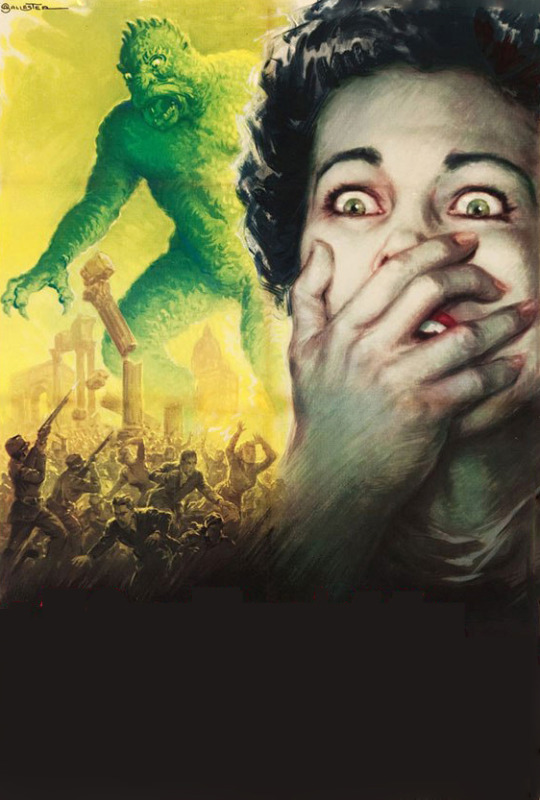
movie poster - 30 Million Miles To Earth - Jun 1957
Anselmo Ballester
#golden age art#Movie poster art#pulp art#pulp art 1957#30 Million Miles To Earth#Anselmo Ballester art#byronrimbaud
40 notes
·
View notes
Text

i forgor i took this p good pic of mr Cock(er) himself at the pulp show last night
#such a great show like genuinely life changing for me#they r one of my favorite bands ever ever it was so amazing to get to see them bc i never thought i would ever see them live#i also have like 30 thousand 10 second videos lmao#pulp#jarvis cocker#warlock wartalks#pulp band
44 notes
·
View notes
Text

BUSTER
#buster#buster crabbe#flash#flash gordon#pulp#ming#mongo#pulp sci fi#pulp science fiction#serials#sci fi serials#sci fi series#science fiction films#science fiction series#30s pulp#30s sci fi#30s science fiction#1930s pulp#1930s movies#1930s#vintage#retro#retro scifi#retro science fiction
41 notes
·
View notes
Text


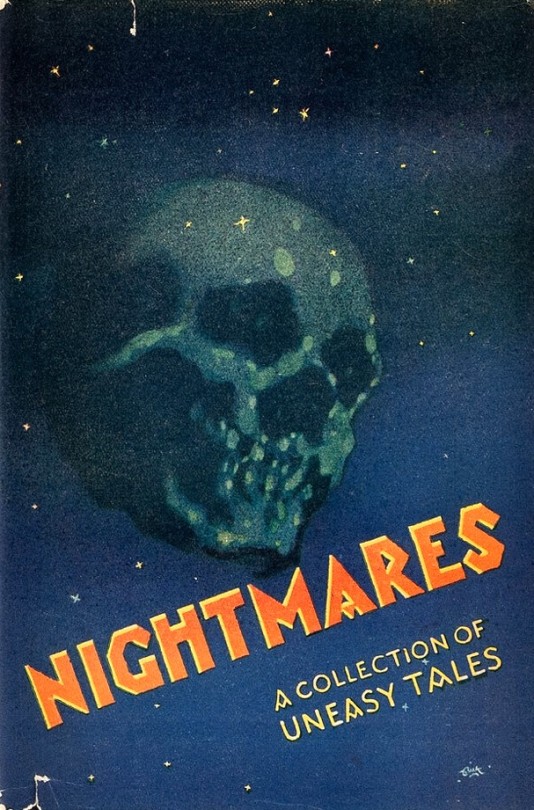
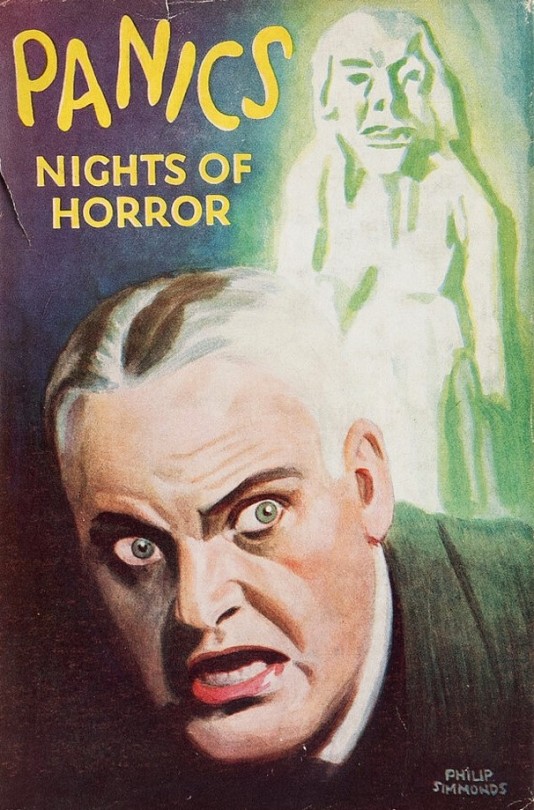
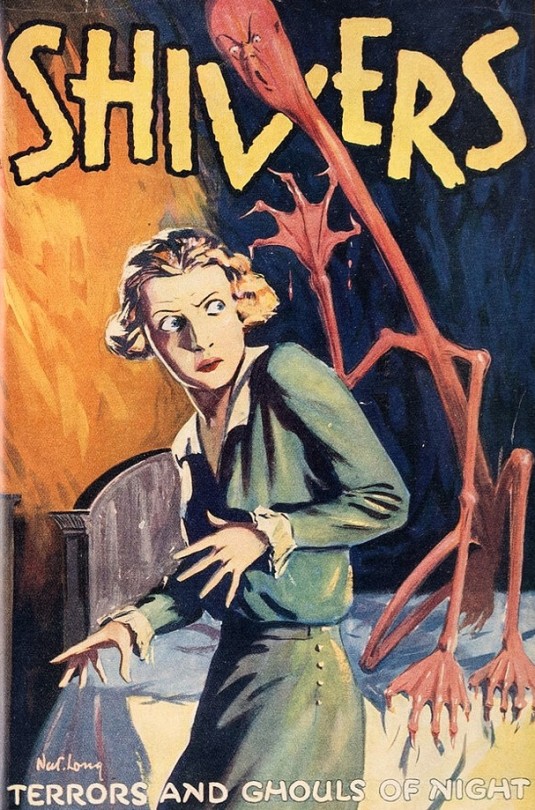




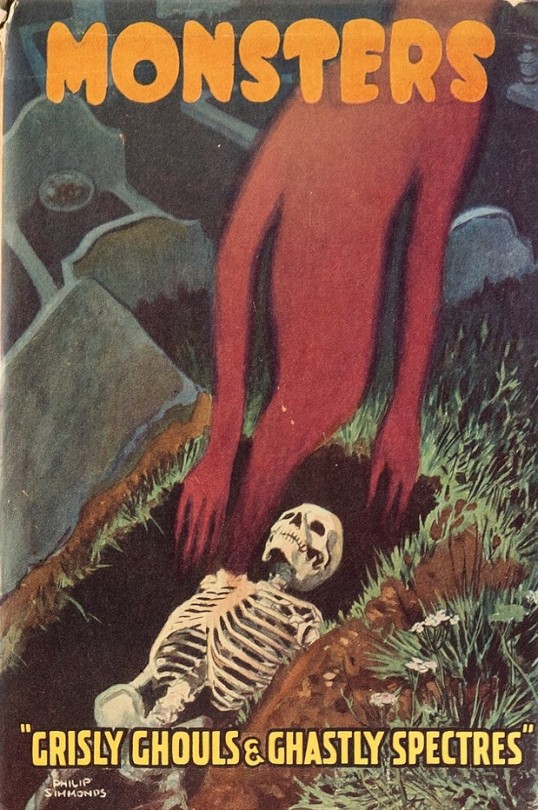
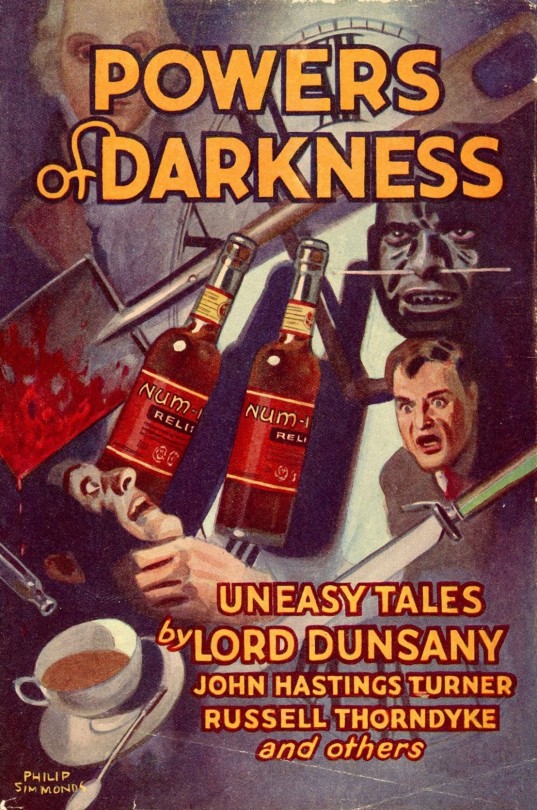

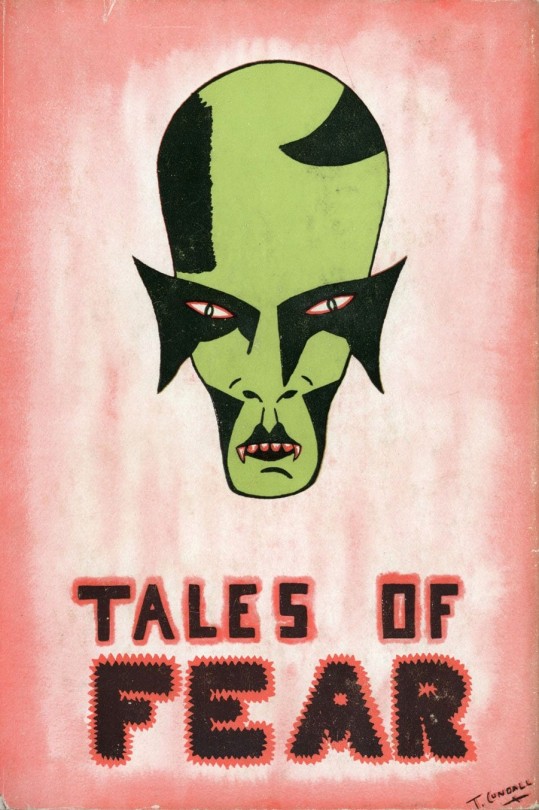
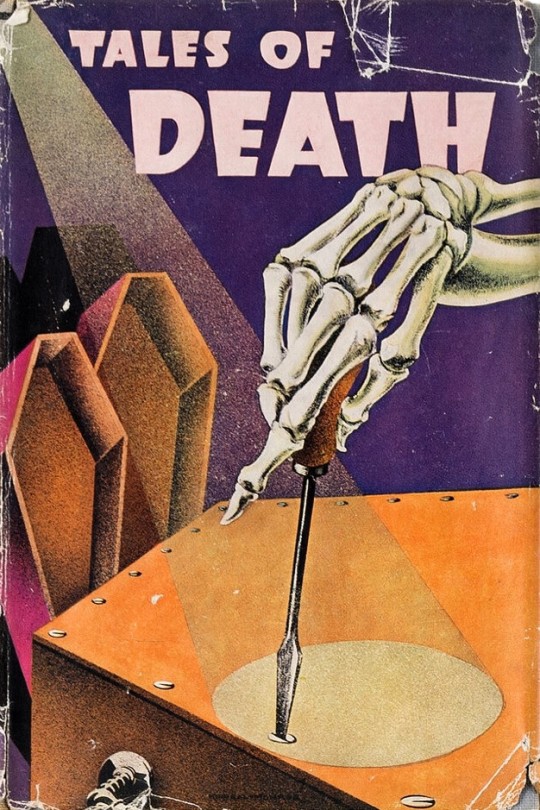
Creeps book series (1932-1936)
#creeps anthology#vintage horror books#vintage book covers#pulp art#horror art#30s horror#charles birkin#horror literature#supernatural fiction#uneasy tales#philip allan publishers#philip simmonds#1930s
308 notes
·
View notes
Text


Doc Savage (Jan1938)
Art by Emery Clarke
Street And Smith
#Pulp#Doc Savage#Pulp Heroes#Emery Clarke#Street And Smith#Vintage#Magazines#Art#Original Art#Before And After#Kenneth Robeson#Pulp Art#Pulp Illustration#1938#1930s#30s
105 notes
·
View notes
Text
Yes, Scientology is an evil cult that ruins people’s lives, yes, he spent a lifetime as a con-man and pathological liar, but I feel this should be said: L. Ron Hubbard was not just a good writer, but a great writer, even in the context of the Golden Age, which had no shortage of them, and he was a popular one as well, regularly topping reader polls in Unknown and Astounding.

His contemporaries, like Asimov and L. Sprague de Camp, were in awe of him (at least until things started to get weird with Dianetics). He was the first major writer of scifi to prioritize characterization over a science fiction idea, to write stories that dealt with neurosis and everyman protagonists over adventure stories where an engineer solves a problem, and because of that, his 1930s-40s work has aged so much better than nearly everyone else from that time.
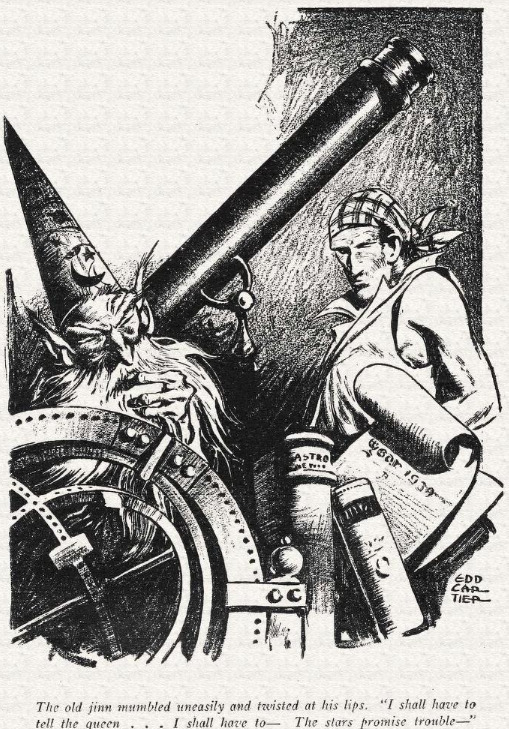
His best work, in my opinion, was not his scifi but his fantasy/horror, published mainly in John W. Campbell’s Unknown, a magazine he created for horror and fantasy (the two were, really, one genre until the 1960s, like twins conjoined at birth, there was scifi and then there was everything else, witch’s brews and dragons). They include Slaves of Sleep, which starts with a millionaire in modern times who was cursed by an Ifrit inside an artifact he finds, so that every time he goes to sleep, he wakes up in an Arabian Nights realm ruled by an evil genie queen, and whenever he wakes up, he vanishes from that world back into ours, and it’s unclear which is the dream and which is reality. This was a major theme of Heinlein’s work, the blurring between reality and fantasy in a story to the point where it was unclear which is which. He wrote two other fantasy novels with a similar theme: Typewriter in the Sky, which starts as a traditional pirate adventure story, but then there is a sound of a typewriter clacking in the sky, and then everything in the story is rearranged.

The most fascinating work of Hubbard’s fantasy/horror, and the one with the best insight into his psyche, is Fear, a psychological thriller where a man is visited by demons and ghouls after mocking black magic, and it’s not clear if he’s hallucinating them or if he is going insane, and both possibilities are equally horrifying. There’s no Soldier of the Mist (or Gene Wolfe in general) without Fear. The reason this story is the most fascinating insight into Hubbard as a man is because I actually suspect that L. Ron Hubbard, who wrote about the blurring between fantasy and reality, and had a tendency to write nervous, unheroic, nebbish main characters, may not have been a complete scammer. I think he was the kind of scammer that believed his own bullshit and got high on his own supply, a pusher and user simultaneously. This reminds me of stories Scientology insiders tell where he would have auditing session after auditing session when he felt tormented, something it’s hard to imagine a completely cynical fraudster would do.
185 notes
·
View notes
Text


Anti-Nazi 1930s heroes who aren't Jewish but also are and can't seem to decide whether they're glasses-wearing nerds or pillars of machismo.
#Superman#Clark Kent#Indiana Jones#Indy counts because he's a deliberate pulp homage whose stories are set in the 30s#And yes I know Nazis were never Superman's primary villain but he did fight them sometimes
19 notes
·
View notes